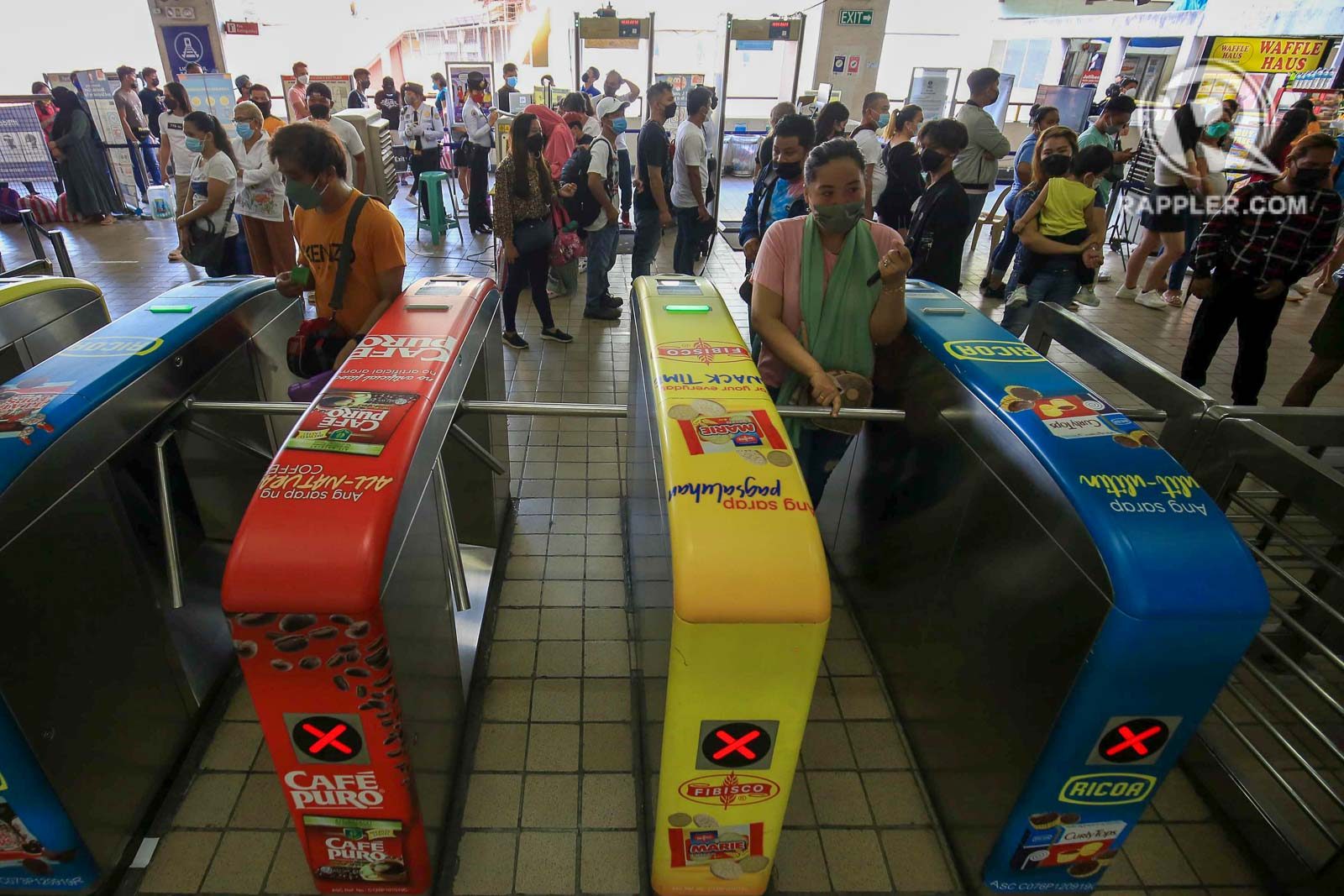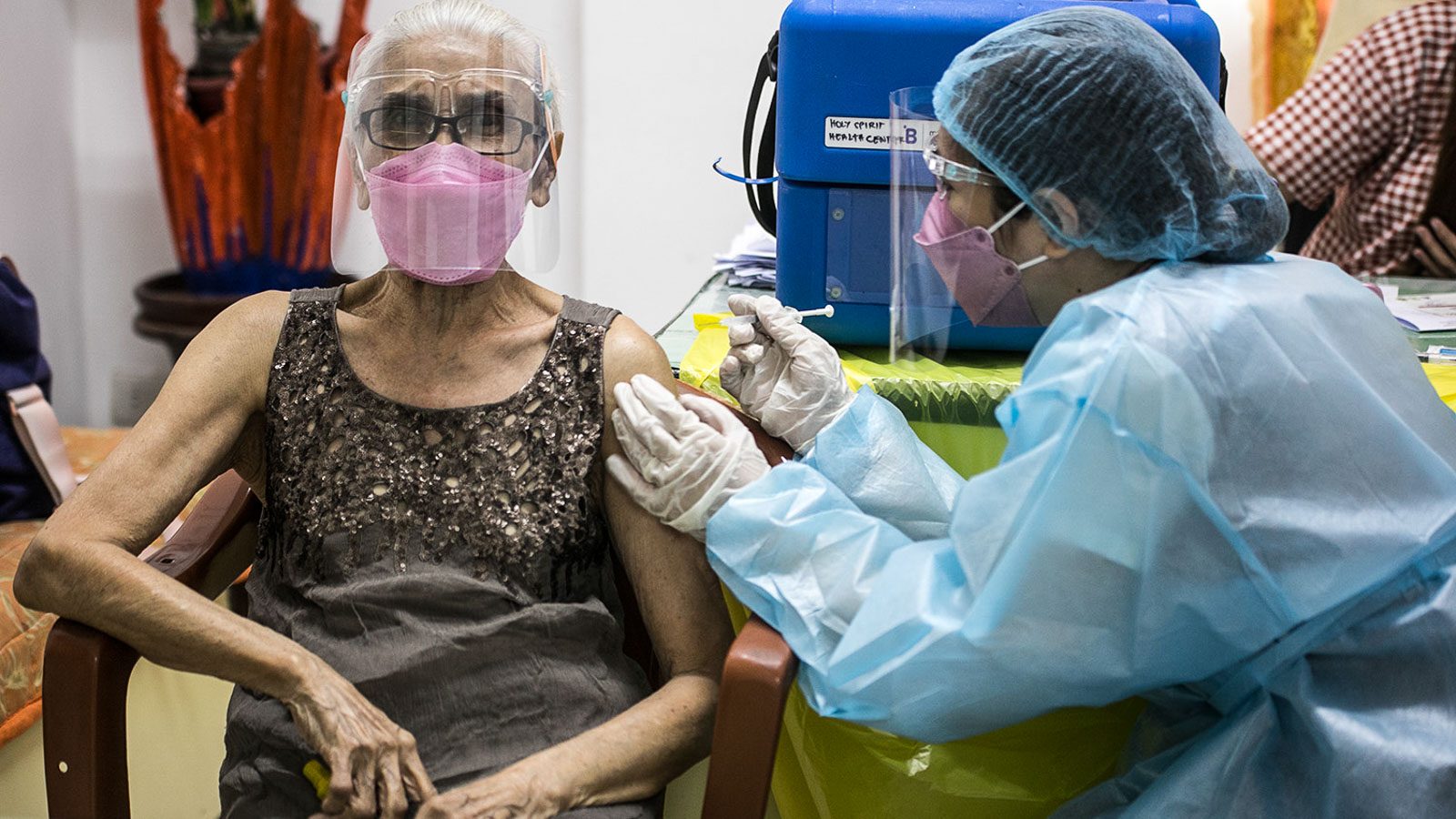WHAT YOU NEED TO KNOW
How many people have tested positive for COVID-19 in the Philippines? How many have recovered, and how many have died? What is President Rodrigo Duterte doing about it?
Metro Manila and other parts of the country have eased into the “new normal” starting March, owing to lower cases. Will this be sustained? How is the Department of Health addressing the evolving situation? What should the public expect in terms of the economy? What are the latest updates from the World Health Organization?
Bookmark and refresh this page for the latest news updates, opinion articles, and analysis pieces about the COVID-19 pandemic in the Philippines.
LATEST UPDATES
DOH: If health protocols followed, daily COVID-19 cases may drop to 70 by end-April
COVID-19 infections continue to drop in the country, and if the public will continue to comply with public health standards, daily cases are seen to drop to 70 by the end of April, the Department of Health (DOH) said on Tuesday, March 29.
Health Undersecretary Maria Rosario Vergeire said that this projection is based on the status quo, which means that the country will retain the current mobility patterns and keep complying with the minimum public health standards and vaccinations.
“Nationally, we will have daily cases of 70 to 268,” Vergeire said. However, if the public will not be compliant with health standards, daily infections may shoot up to 270.
Gov’t to hold special vaccination days in Davao, Cebu province, BARMM
The government is set to hold special vaccination days from March 29 to 31 in Davao region, Cebu province, and Cotabato City, and March 30 to April 1 in the Bangsamoro Autonomous Region in Muslim Mindanao, to boost the country’s COVID-19 vaccine coverage.
Read more.
Philippines allows entry of fully vaccinated foreigners starting April 1
Malacañang says foreign travelers should present “acceptable proof of vaccination.”
Read more.
Duque: PH likely to remain under Alert Level 1 until end of Duterte’s term
The health secretary says the government will focus on helping Alert Level 2 areas to be deescalated to Alert Level 1.
Read more.
Two years later, what’s changed with COVID-19 in the Philippines?

Two years after the coronavirus pandemic shuttered the Philippines, most parts of the country have fully reopened, with the Duterte government pressed to usher in a “new normal” and jumpstart the road to recovery.
Vaccinations are in full swing, students have started returning to schools, while restaurants, cinemas, and stores have opened for business. Millions of Filipinos likewise appear ready to move beyond the pandemic.
But between then and now, over 57,000 Filipinos have died and more than 3.67 million more have gotten sick with COVID-19. Only 57% of all Filipinos have gotten fully vaccinated.
Rappler reviews some of the major changes that have taken place locally, two years on.
Read the full article here.
Ending the pandemic: Vaccinating the elderly, masking up, and other strategies

Omicron is not the end of viral evolution and there is no guarantee that the next variant will not be even more transmissible than Omicron while simultaneously being more virulent than Delta.
Rather than merely wishing that the transition to the endemic state will be brought about by succeeding Omicron-like variants, we should undertake the difficult and unfinished public health actions that will make endemicity more likely.
If we could only do one thing, the most effective way to end the pandemic would be to vaccinate the elderly. About 2.6 million elderly Filipinos are still unprotected from the virus.
Read the detailed recommendations by Dr. John Wong of the public health research firm EpiMetrics here.
Philippines grants emergency use of Sinovac vaccine for kids 6 and up
The Philippines’ Food and Drug Administration (FDA) granted emergency use authorization (EUA) for the Sinovac COVID-19 vaccine for children aged 6 and above, providing another vaccine option for this age group in the country.



